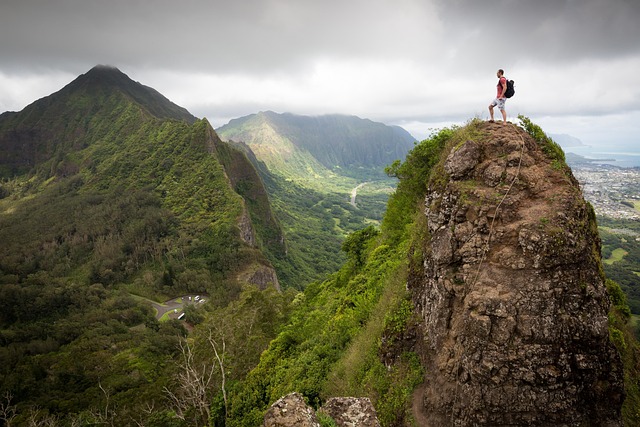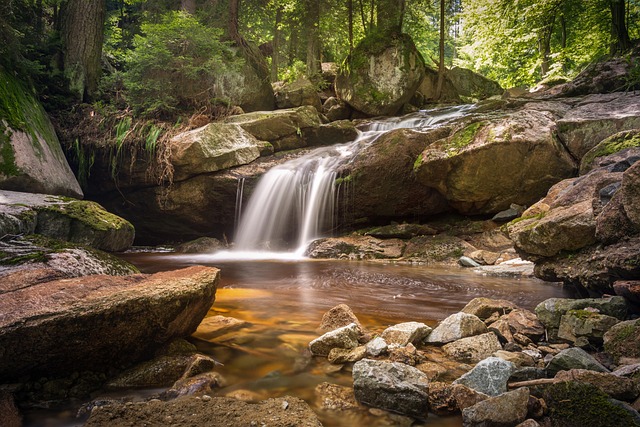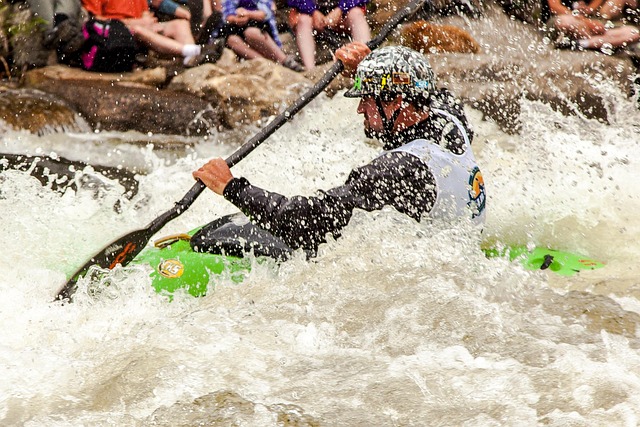Kayaking on the McKenzie River provides an immersive experience in a rich biodiversity ecosystem. To enhance the journey, paddlers should adopt slow and steady paces, explore varied terrain with dense vegetation, and utilize binoculars for detailed glimpses of rare species. Navigating by natural markers like rock formations and changes in water color, combined with understanding current patterns, ensures safer journeys through the river's twists and turns. The river's ecology undergoes seasonal shifts, impacting wildlife behaviors from spring migrations to winter protection of endangered species. Responsible kayaking practices include maintaining safe distances, respecting habitats, and adhering to 'leave no trace' principles to preserve this natural wonder for future generations.
Explore the pristine waters of the McKenzie River with confidence using these essential navigation tips for kayakers. Uncover how understanding the unique ecosystem, identifying key landmarks, and mastering seasonal patterns can enhance your experience while ensuring minimal impact on the remarkable wildlife that calls this river home. From spotting aquatic creatures to adopting ethical kayaking practices, elevate your McKenzie River adventure.
- Understanding the McKenzie River Ecosystem: A Kayaker's Perspective
- Wildlife Spotting Techniques for Optimal Visibility
- Navigating the River: Key Landmarks and Flow Patterns
- Seasonal Changes and Their Impact on Wildlife Activity
- Ethical Kayaking Practices to Respect the Natural Environment
Understanding the McKenzie River Ecosystem: A Kayaker's Perspective

Kayaking down the McKenzie River offers an unparalleled chance to immerse oneself in a diverse and dynamic ecosystem. As you paddle, keep an eye out for the rich wildlife that calls this river home. From majestic fish species like salmon and trout, to birds such as herons, eagles, and ducks, the McKenzie River is teeming with life. Understanding the behaviors and habitats of these creatures can enhance your kayaking experience, allowing you to navigate safely while also appreciating the natural surroundings.
The river’s ecosystem plays a crucial role in guiding kayakers’ routes and decisions. For instance, certain areas are known for abundant fish populations, attracting birds of prey. Moreover, understanding the river’s flow patterns helps in avoiding rapids or shallow stretches that could pose risks. By observing the wildlife and their interactions with the river, kayakers can make informed choices, ensuring a memorable journey while respecting the delicate balance of this natural habitat.
Wildlife Spotting Techniques for Optimal Visibility

When kayaking on the McKenzie River, keeping an eye out for local wildlife can enhance your experience significantly. To maximize visibility and encounters, adopt techniques that allow for a slow and steady pace. Paddle at a leisurely speed to give yourself more time to observe birds, fish, and other creatures along the riverbanks and in the water. Using a pair of binoculars or a telephoto lens (if you’re on a guided tour) can also be incredibly helpful for catching detailed glimpses of rare species.
Focus on areas with varied terrain and dense vegetation, as these habitats often attract diverse wildlife. Keep a safe distance from animals to avoid disturbing them and ensure your own safety. Remember, the goal is not just to spot wildlife but to appreciate their natural behavior in their habitat.
Navigating the River: Key Landmarks and Flow Patterns

Navigating the Mackenzie River by kayak offers a unique experience, with its pristine waters teeming with wildlife and its landscape dotted with key landmarks. To make your journey smoother, look out for natural markers like distinctive rock formations, overhanging trees, and changes in water color. These landmarks provide crucial references for orienting yourself along the river’s twists and turns.
The river’s flow patterns also play a significant role in navigation. Observe the current’s speed and direction, especially around bends, as they can vary significantly. Generally, the faster the current, the tighter the bend. Kayakers often use these currents to their advantage, allowing them to cut across meanders and save time. Understanding these patterns enables you to anticipate changes ahead, ensuring a safer and more enjoyable kayaking experience amidst the Mackenzie River’s beautiful wildlife habitats.
Seasonal Changes and Their Impact on Wildlife Activity

The McKenzie River’s ecology undergoes significant seasonal transformations, which directly influence the behavior and activity levels of its resident wildlife. During spring, the river comes alive with migrating fish species, attracting various predators like bears and eagles. This period is particularly exciting for kayakers as they can witness an abundance of wildlife along the shorelines and in the river itself. As summer sets in, the river’s flow might slow down, creating calm pools that support a diverse range of aquatic life, including insects and small mammals.
Autumn brings a dramatic change with cooler temperatures, causing leaves to change color and fall from trees. This season marks the migration of many bird species, offering kayakers a unique opportunity to observe these graceful flyers as they soar overhead or gather on riverbanks. Winter, while quieter, is crucial for endangered species like the Oregon spotted frog, which relies on specific water conditions for breeding. Kayakers should be mindful of their presence and practice responsible observation during this time, ensuring minimal disruption to the delicate balance of the McKenzie River’s ecosystem and its wildlife inhabitants.
Ethical Kayaking Practices to Respect the Natural Environment

When exploring the majestic McKenzie River via kayak, it’s essential to adopt ethical kayaking practices that respect and protect the natural environment. As you navigate through this pristine waterway, keep in mind that you’re entering a delicate ecosystem teeming with wildlife. Maintain a safe distance from animals, especially birds and fish, to avoid disturbing their habitats. Remember, these creatures rely on the river for food, shelter, and breeding grounds; any human intrusion can cause significant stress.
Additionally, minimize your impact by leaving no trace behind. This means using designated landing areas and portages to avoid damaging sensitive vegetation along the riverbanks. Always properly dispose of waste, and consider carrying a small bag or pack to collect any litter you might encounter during your journey. Respecting the McKenzie River’s natural beauty is not just about preserving its ecological integrity; it’s also about ensuring future generations can experience this breathtaking waterway as you do today.
